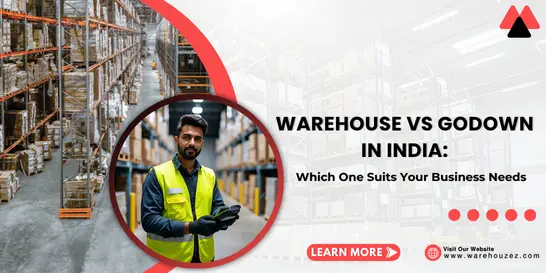B2B and B2C Supply Chain Management Strategies for Success
B2B and B2C Supply Chain Management: Strategies for Success
Supply chain management has today become the backbone of each and every successful business. But have you ever really thought why managing supply chains for B2B (Business-to-Business) and B2C (Business-to-Consumer) models feels so different?
Well, both serve the same purpose, that is, getting products from one point to another. Yet their processes, priorities, as well as challenges are miles apart. Learning these differences and applying the right strategies can literally make or break a company’s growth.
To make it easier for you all, in this blog post, we will see how B2B and B2C supply chain management work, their unique processes, and valuable strategies that drive success in each model. So, let’s dive in!
Understanding B2B Supply Chain Management
B2B supply chain management, basically deals with the movement of goods between businesses. It generally involves larger transactions, bulk shipments, and long-term relationships between suppliers, manufacturers, and distributors.
What It Means
In B2B fulfillment, companies sell to other companies, not end consumers. For instance, an aviation and automotive brand buying tires from a supplier is a B2B transaction.
Why It’s Important
B2B supply chain management helps with quick production, timely deliveries, and smooth coordination across multiple partners. Since downtime or delay can cost large amounts of money, reliability is indeed important here.
Focus Areas
- Bulk Orders: Transactions usually involve large quantities and scheduled, on- time deliveries.
- Relationship Management: Trust as well as long-term partnerships are prominent.
- Process Integration: Businesses often integrate software systems and tech tools for real-time visibility, strategic planning, and smart decision making.
Processes Involved
- Procurement and sourcing of raw materials at affordable rates.
- Transportation, route planning, and optimization.
- B2B warehousing and fulfillment operations.
- Inventory control and demand forecasting.
- Distribution and order tracking.
Example
Let’s take an example to make things clearer. There’s an electronics brand that buys microchips from suppliers. The chips move through several B2B warehouses before actually reaching the factory. This flow must stay efficient and uninterrupted in order to meet production timelines.
Understanding B2C Supply Chain Management
Now, coming to B2C supply chain management, it deals directly with the end consumer. It concentrates on speed, convenience, and customer experience rather than bulk handling.
What It Means
In a B2C supply chain, products move from B2C warehouses to consumers through retail stores or online channels. A good example is e-commerce, where customers expect fast shipping and hassle- free reverse logistics.
Why It’s Important
Customers of today want same-day deliveries, flexible returns, and live updates. B2C logistics makes sure that brands meet these expectations while maintaining profitability.
Focus Areas
- Speed and Order Accuracy: Orders must be processed correctly and in the quickest possible manner.
- Customer Experience: Each and every step in supply chain management affects the reputation of a brand and customer satisfaction.
- Scalability: Demand spikes during sales or festivals require scalable systems.
Processes Involved
- Inventory storage in B2C warehouses.
- E-commerce fulfillment.
- Picking, packing, labeling, and last-mile delivery.
- Reverse logistics (returns, refunds, and exchanges).
- Customer communication and tracking.
Example
Let’s take a simple example. When you order clothes online, the product moves from a fulfillment center to your doorstep, most often within 24 to 48 hours. That’s exactly how the B2C supply chain works, supported by advanced technology and efficient warehousing.
B2B vs B2C Supply Chains: What’s the Difference
Although both of them aim to deliver products efficiently, their operations differ significantly.
| Aspect |
B2B Supply Chain |
B2C Supply Chain |
| Customer Type |
Businesses, distributors, manufacturers, and suppliers |
Individual consumers |
| Order Volume |
Bulk, large-scale |
Small, more frequent orders |
| Delivery Speed |
Planned schedules |
Fast, often same-day |
| Relationship Focus |
Long-term partnerships |
Customer satisfaction |
| Warehousing Needs |
Bulk storage and material handling |
High-speed order fulfillment |
| Technology Use |
ERP, WMS, and integrated systems |
E-commerce, IMS, WMS, real-time tracking |
At the end of the day, learning these distinctions helps companies design the right warehousing and logistics strategies to meet unique demands.
Strategies for Successful B2B and B2C Supply Chain Management
Success in both models depends on adopting smart, flexible, and data-driven strategies. Let’s list out some proven, tried and tested tips and ticks.
Streamline Inventory Management
- Apply demand forecasting tools to prevent overstocking or stockouts.
- For B2B warehouses, focus on optimizing bulk storage; for B2C, focus on quick-pick zones.
- Use powerful WMS (Warehouse Management Systems) to track inventory in real-time.
Build Strong Supplier and Vendor Relationships
- For B2B logistics, maintaining long-term partnerships guarantees consistent supply.
- For B2C logistics, reliable last-mile delivery partners promise timely deliveries.
Optimize Fulfillment Operations
- In B2B warehousing and fulfillment, automation reduces errors and time involved in material handling.
- In B2C fulfillment, focus on faster picking, packaging, labeling, and dispatch.
Embrace Data and Analytics
Use analytics to identify demand patterns, forecast seasonal spikes, and improve routing efficiency. Data-driven insights lead to better decision-making and cost control.
Focus on Customer Experience
For B2C, provide clear communication, fast shipping, and simple returns. For B2B, ensure order accuracy, flexibility, and on-time delivery.
The Transformative Role of Technology in Modern Supply Chains
Technology is certainly the game-changer that connects B2B and B2C supply chains. It enhances visibility, speed, and accuracy across every stage.
Popular Technologies Driving Change
- Automation: Robotics and automated conveyors improve picking and packing.
- AI and Machine Learning: Predict trends, demand, and potential disruptions.
- IoT (Internet of Things): Real-time tracking of goods in transit.
- Cloud-based Platforms: Enable collaboration and visibility across supply chain partners.
- WMS and TMS: Help manage warehouse and transportation related operations.
Example
A company using AI-powered WMS can monitor its inventory across multiple B2B and B2C warehouses simultaneously. This gives better stock visibility and faster order fulfillment.
Concluding Remarks
Both B2B and B2C supply chains are primary pillars of modern commerce. While one thrives on relationships and bulk operations, the other depends on speed and customer experience.
The key to success lies in understanding their unique demands, integrating technology, and continuously improving processes.
For companies like Warehouzez, offering tech-enabled warehousing, logistics, and fulfillment solutions, managing both B2B and B2C supply chains effectively is not just a service, it’s a competitive advantage.
FAQs
Q1. What is the main difference between B2B and B2C supply chain management?
B2B focuses on business transactions in bulk, while B2C handles smaller, individual orders for consumers. B2B emphasizes long-term relationships, while B2C emphasizes customer experience and delivery speed.
Q2. What are the key components of B2B logistics?
- Procurement and sourcing
- Transportation management
- Inventory control
- B2B warehousing and fulfillment
- Distribution and order tracking
Q3. Why is technology essential in B2C logistics?
Technology enables real-time tracking, faster order processing, and improved customer communication. It also helps manage returns efficiently and maintain transparency across the supply chain.
Q4. How can businesses improve their supply chain efficiency?
Businesses can:
- Automate warehouse operations
- Use predictive analytics
- Collaborate closely with suppliers
- Adopt modern WMS and TMS software
Q5. What role does warehousing play in supply chain management?
Warehousing acts as the central point where products are stored, sorted, and shipped. Whether for B2B or B2C, efficient warehouses reduce delays, manage inventory better, and support smooth fulfillment operations.



